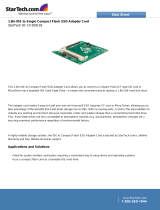
SMART ATA drives ................................................................................................................................................ 16
Cable management .............................................................................................................................................. 16
4 Removal and replacement procedures: Small Form Factor .............................................................................. 17
Preparation for disassembly ............................................................................................................................... 17
Access panel ......................................................................................................................................................... 18
Front bezel ........................................................................................................................................................... 18
Slim optical drive bezel blank .............................................................................................................................. 19
Expansion card ..................................................................................................................................................... 20
Drive cage ............................................................................................................................................................ 24
Memory ................................................................................................................................................................ 26
DIMMs ................................................................................................................................................ 26
DDR4-SDRAM DIMMs ......................................................................................................................... 26
Populating DIMM sockets .................................................................................................................. 26
Removing and installing DIMMs ........................................................................................................ 27
System board connections .................................................................................................................................. 29
Drives ................................................................................................................................................................... 30
Drive positions ................................................................................................................................... 31
Removing a 9.5mm slim optical drive ............................................................................................... 31
Installing a 9.5mm slim optical drive ................................................................................................ 32
Removing and replacing a hard drive ............................................................................................... 33
Fan ........................................................................................................................................................................ 37
Fan sink ................................................................................................................................................................ 38
Processor ............................................................................................................................................................. 39
Power supply ....................................................................................................................................................... 40
Front I/O assembly ............................................................................................................................................... 42
Power switch assembly ....................................................................................................................................... 43
Speaker ................................................................................................................................................................ 44
System board ....................................................................................................................................................... 44
System board callouts ....................................................................................................................... 46
Changing from desktop to tower conguration .................................................................................................. 47
5 Computer Setup (F10) Utility ........................................................................................................................ 48
Computer Setup (F10) Utilities ............................................................................................................................ 48
Using Computer Setup (F10) Utilities ................................................................................................ 48
Computer Setup–Main ....................................................................................................................... 50
Computer Setup—Security ............................................................................................................... 52
Computer Setup—Advanced ............................................................................................................. 54
Recovering the Conguration Settings ............................................................................................................... 59
vi





















